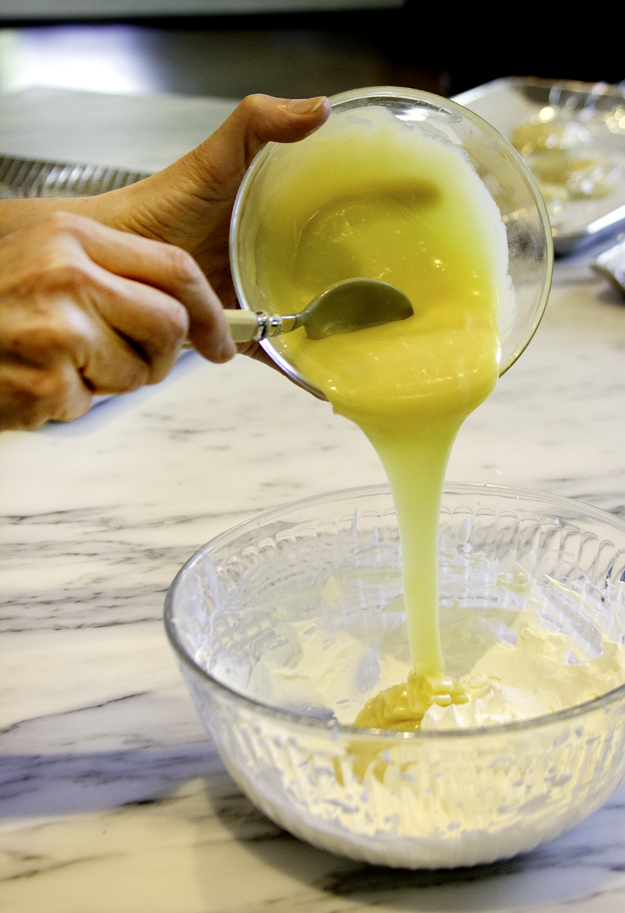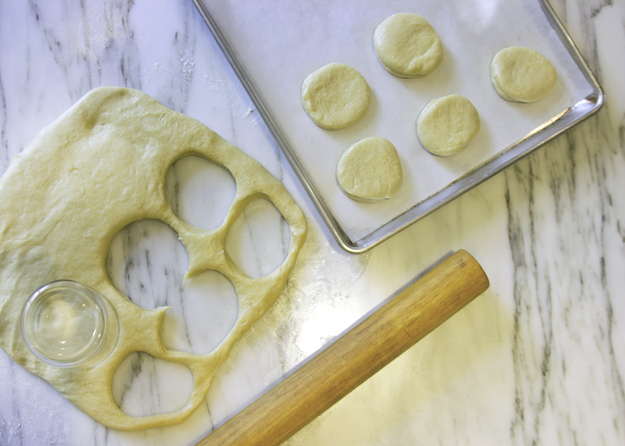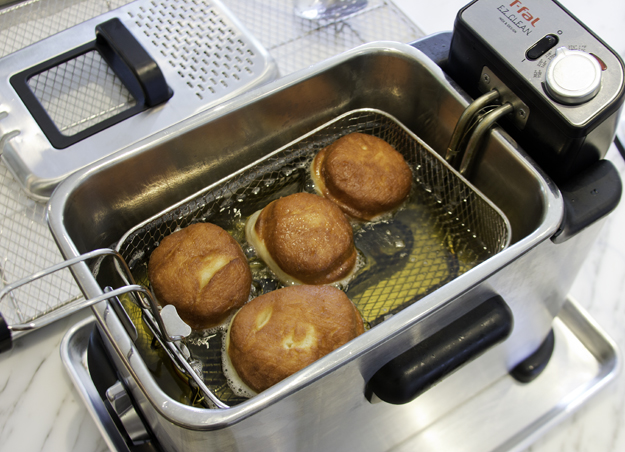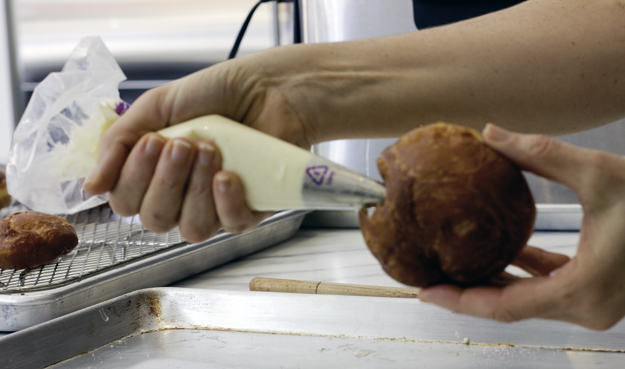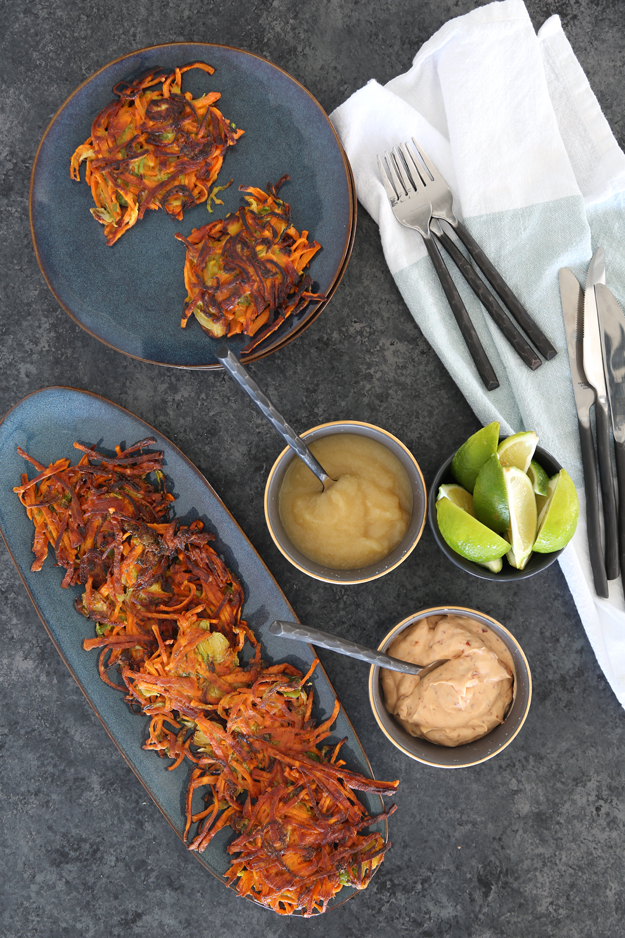
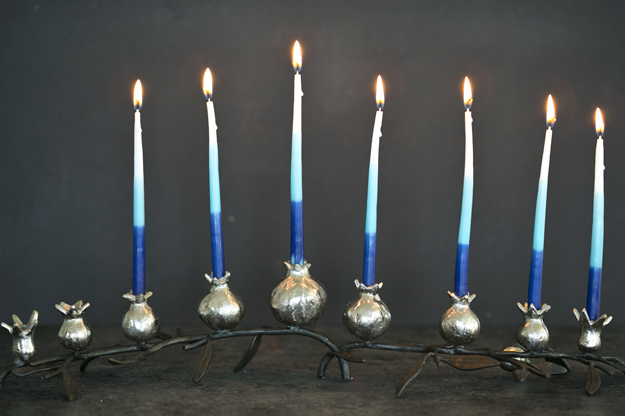
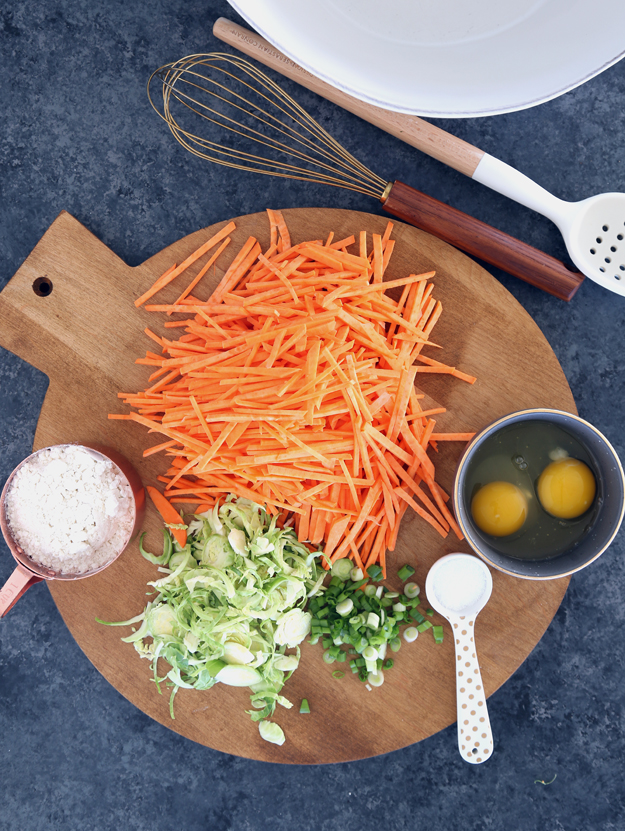
Eggs and flour act as the glue to hold everything together. 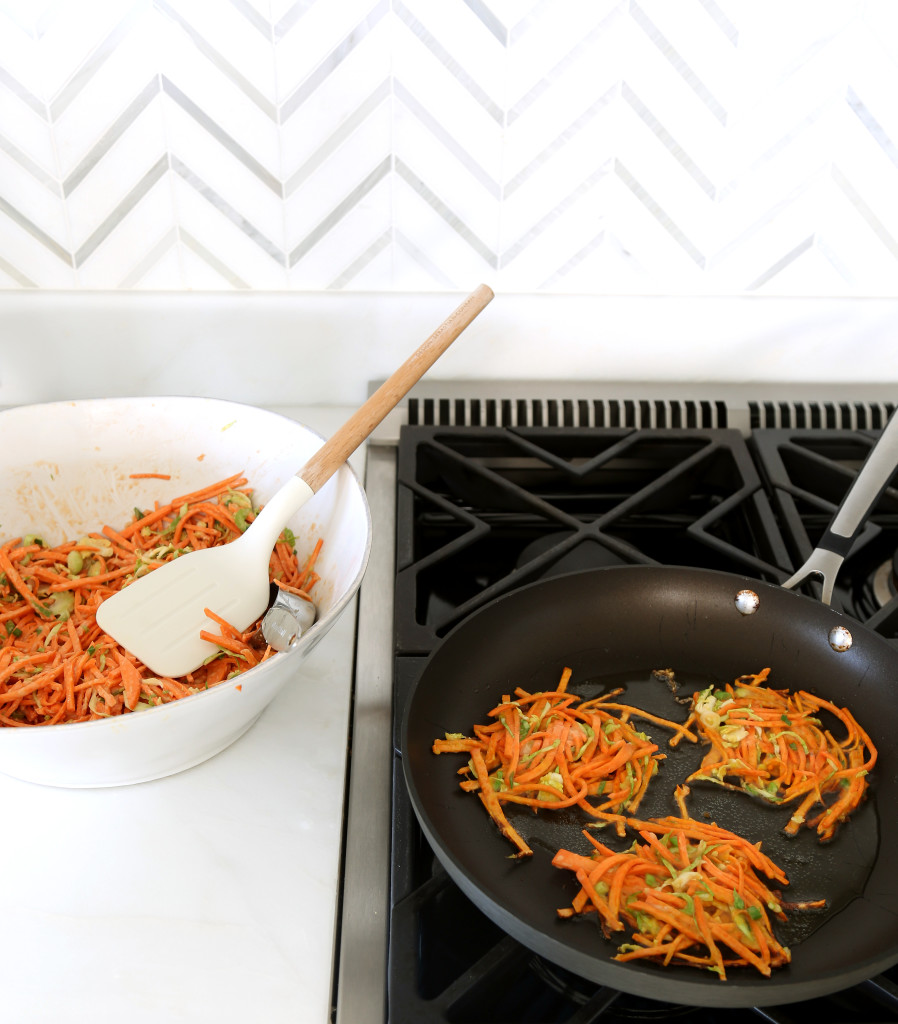
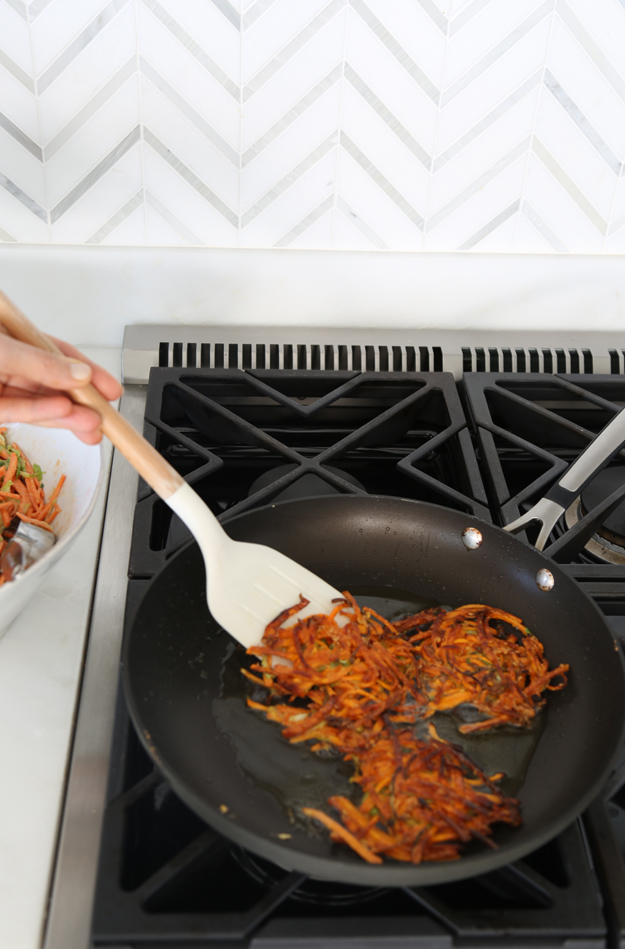




Eggs and flour act as the glue to hold everything together. 

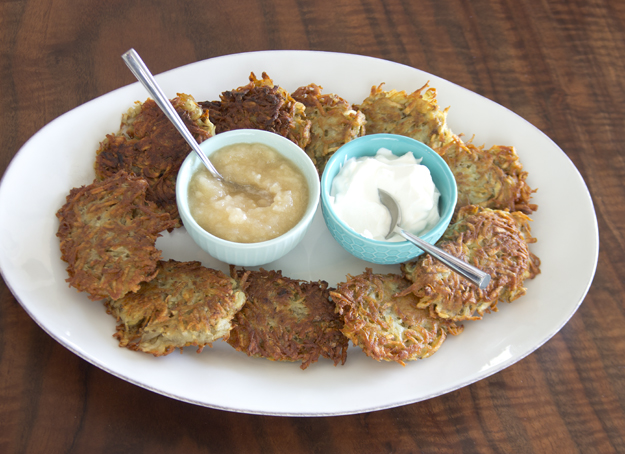
The first time I posted about potato latkes on this blog Taylor Swift was dating Jake Gyllenhaal. The second time, a month later, Taylor and Jake were still being spotted canoodling in public. The third time I posted about latkes, Taylor was keeping company with Harry Styles. My final latke posting was last November and Taylor was trying to make Harry Styles jealous by stepping out with Douglas Booth.
From the above paragraph you might conclude that: a) For a woman over the age of 50, I have an inappropriate fascination with Taylor Swift. (Sadly true!), and, b) I also have an unhealthy love of potato latkes (also, sadly true).
I used to believe that I had the very best latke recipe. And then I tried the Cook’s Illustrated version and discovered that I was wrong! These latkes were light, not at all heavy or greasy. The outer crust was crunchy to the point of almost shatteringly crisp and insides were creamy, tender and pillowy soft. These are everything that all self respecting latkes aspire to be.
Leave it to Cook’s Illustrated to crack the code and perfect the latke. A typical tuber contains 80% water by weight! The secret, it seems, is to rid the potato of as much of it’s water content as possible. This means a little extra work to squeeze out all the moisture that potatoes exude, but trust me, the effort is worth it.
Russet potatoes are the best variety to use. Grating them by hand on a box grater will give you the best texture. Just scrub the potatoes. No need to even peel the potatoes, just scrub well.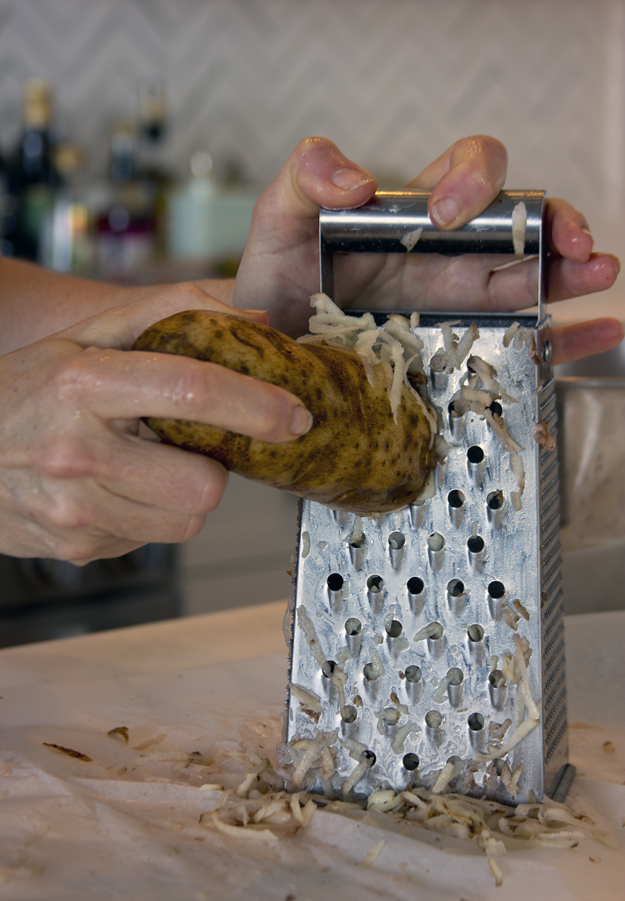
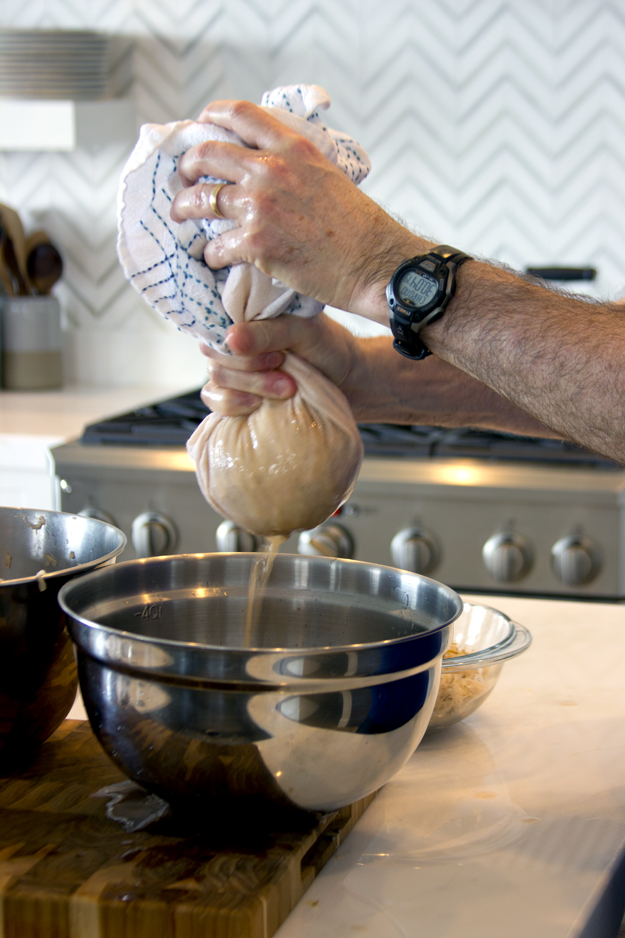
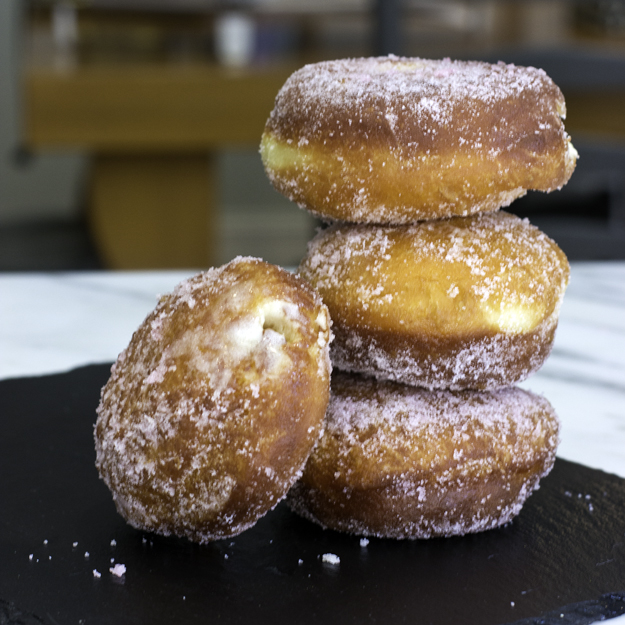
“Truth” is a word to be avoided when discussing history and religion. Since the victors of a battle often write the history, the facts of what happened in the past depend very much on whom you ask and when it comes to religion, everyone has a different truth.
Chanukah is the only major Jewish holiday not explicitly mentioned in the Torah (Judaism’s written law), since the events that inspired the holiday occurred after it was written. The Rabbis wrote about Chanukah in the Talmud (Jewish oral law and tradition), but that was written over 600 years after the Maccabees revolt. Their version of Chanukah differs markedly from The Books of Maccabees written in the 2nd century B.C.E.
So we have here two versions of the Chanukah story: one from the Book of Maccabees and the other from the Talmud. Both versions agree on the first part of the story. Around 200 B.C.E., Judea (Israel) came under control of the Syrian King, Antiochus III. He was a benevolent fellow and allowed the Jews to continue practicing their religion. Things changed drastically when his son, Antiochus IV, took over.
This evil king outlawed the Jewish religion and ordered the Jews to worship Greek gods. In 168 B.C.E., his soldiers marched into Jerusalem, exterminated thousands of people and desecrated the holy Second Temple by constructing an altar to Zeus and commanded the Jews to sacrifice a pig upon this alter.
The Jewish priest Mattathias and his five sons led a large-scale rebellion against Antiochus and his army. When Mattathias died in 166 B.C.E., his son Judah Maccabee took over. Within two years, the Jews, relying on Guerrilla warfare tactics, defeated the Syrian Greek army and drove them out of Jerusalem.
The Maccabees cleansed the Second Temple, rebuilt the altar, lit its menorah and celebrated the rededication (the word Chanukah means dedication). And thus the eight-day festival of Chanukah was born. Why eight days? Well, here’s where the story begins to diverge. According to The Book of Maccabee II, while the Maccabees were fighting, they had missed the eight-day holiday of Sukkot, (celebrated in early fall) and so to celebrate the Second Temple rededication, they declared a “better-late-than-never” celebration of Sukkot.
Version 2, as written in the Talmud gives us this spin on the eight-day festival. Judah Maccabee and his team, who took part in the rededication of the Second Temple, witnessed what they believed to be a miracle. Even though there was only enough oil to keep the menorah’s candles burning for a single day, the flames burned for eight nights. This wondrous event inspired the Rabbis to proclaim a yearly eight-day festival.
The Rabbis barely mentioned the battle between the Maccabees and the Greeks in the Talmud. The reason for this is unclear. Perhaps they did not want to encourage the celebration of a military battle, or perhaps, as pacifists, they did not want to encourage the Jewish people, who at that time, were living under Roman rule, to be inspired by revolt.
Rabbi Andrew Jacobs, on “Blog Shalom” explains the miracle of Chanukah this way,
“…even without the oil, .Chanukah is still a miraculous story. The Maccabees were a tiny group of Jews who should not have been able to defeat the powerful Greeks. But they did! And because of this miracle, Judaism survived and did not become consumed by Greek culture. This story of miraculous survival repeats itself many times throughout Jewish history. Despite tremendous powers that have raged against us, nothing has stopped the Jewish people. This is a miracle.”
Although the miraculous oil story may be just a legend, I refuse to give up food fried in oil on Chanukah! To celebrate my newfound knowledge, I am going to go all out this year and celebrate Chanukah with these decadent Pomegranate Sugar-Dusted White Chocolate Doughnuts.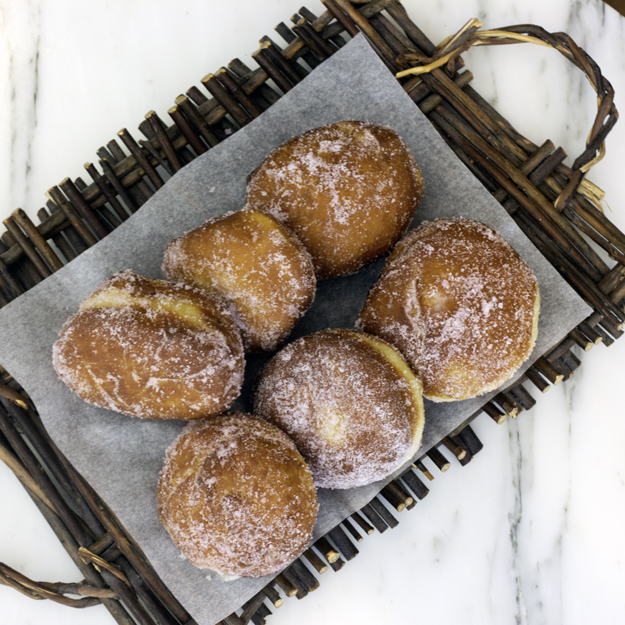
The pomegranate sugar and white chocolate ganache filling can be prepared a day ahead.
